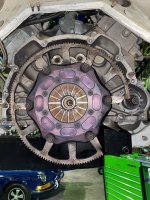Thanks man. Big fan of the yeoman's work you've done on the E30. You've got a mess in the rear suspension like I do to figure out! lol
If I can get a dry sump in the car and actually get some seat time I'm pretty confident the car is a 3/4th to 6th/7th car next year at VIR. That may be its limits though at this power to weight. I do think I'm maxed out or very close to it power wise, and 2675 is a lot to be hauling around (with 300 lbs ballast!).
If I can get a dry sump in the car and actually get some seat time I'm pretty confident the car is a 3/4th to 6th/7th car next year at VIR. That may be its limits though at this power to weight. I do think I'm maxed out or very close to it power wise, and 2675 is a lot to be hauling around (with 300 lbs ballast!).

